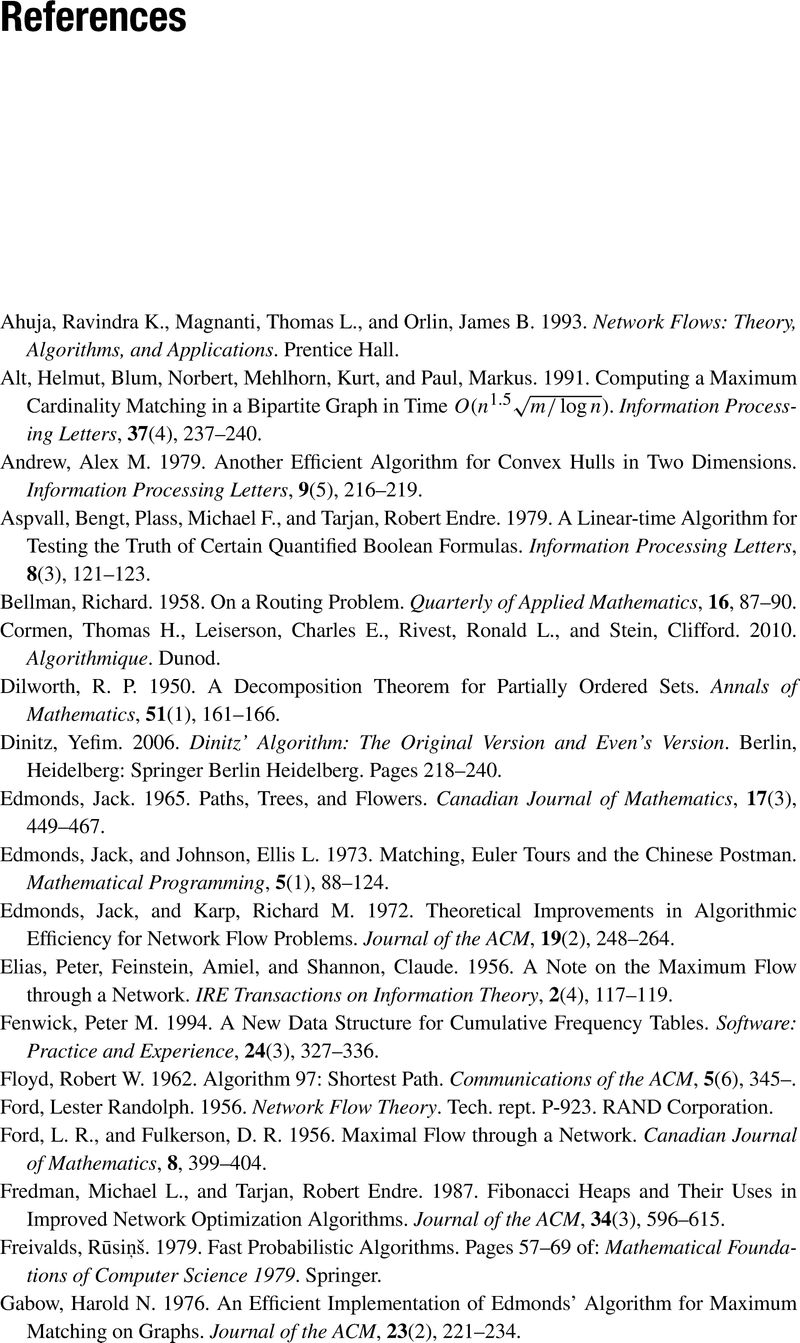Book contents
- Frontmatter
- Contents
- Preface
- 1 Introduction
- 2 Character Strings
- 3 Sequences
- 4 Arrays
- 5 Intervals
- 6 Graphs
- 7 Cycles in Graphs
- 8 Shortest Paths
- 9 Matchings and Flows
- 10 Trees
- 11 Sets
- 12 Points and Polygons
- 13 Rectangles
- 14 Numbers and Matrices
- 15 Exhaustive Search
- 16 Conclusion
- Debugging tool
- References
- Index
- References
References
Published online by Cambridge University Press: 03 December 2020
- Frontmatter
- Contents
- Preface
- 1 Introduction
- 2 Character Strings
- 3 Sequences
- 4 Arrays
- 5 Intervals
- 6 Graphs
- 7 Cycles in Graphs
- 8 Shortest Paths
- 9 Matchings and Flows
- 10 Trees
- 11 Sets
- 12 Points and Polygons
- 13 Rectangles
- 14 Numbers and Matrices
- 15 Exhaustive Search
- 16 Conclusion
- Debugging tool
- References
- Index
- References
Summary

- Type
- Chapter
- Information
- Competitive Programming in Python128 Algorithms to Develop your Coding Skills, pp. 248 - 250Publisher: Cambridge University PressPrint publication year: 2020



